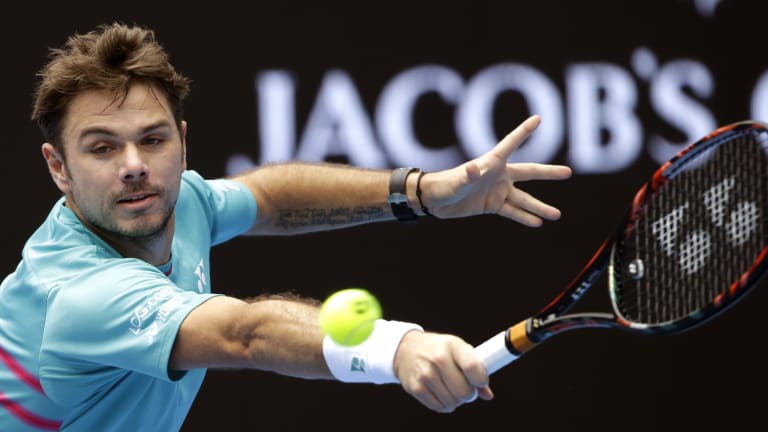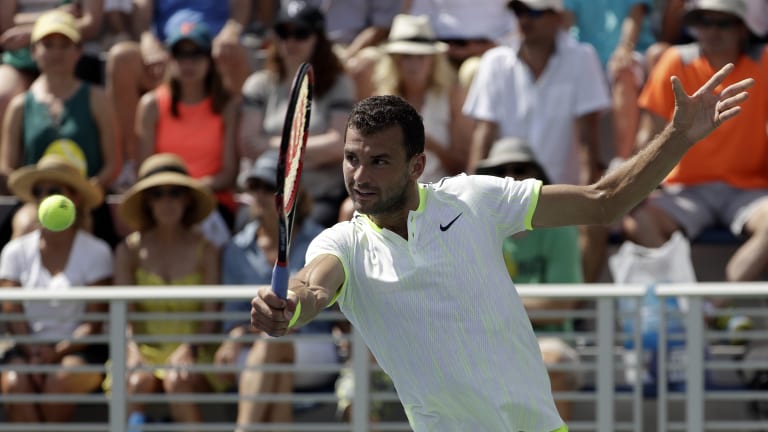“I admire Roger Federer and Stan Wawrinka, the two Swiss,” said 18-year-old Stefanos Tsitsipas last fall when he was asked to name his tennis idols.
Does it seem odd that a teenager born in Greece, and who trains in France, would be such a diehard Swissophile? Not when you see Tsitsipas play; then the connection becomes obvious. Following in the footsteps of Federer and Wawrinka, he uses a one-handed backhand.
You can get an idea of how closely Tsitsipas has studied the Maestro’s backhand when he hits a crosscourt passing shot. Like Federer, he keeps his head down, flicks his wrist and extends his right arm in a circle above his head. And like Federer, he can make it look as if he’s going down the line, only to snap the ball in the other direction.
On Tuesday in Rotterdam, Tsitsipas made the ball dip, drop and hook enough to give Jo-Wilfried Tsonga a good two-set run for his money. He was up a break in the first set, and he pushed the second set to a tiebreaker. Tsitsipas was the No. 2-ranked junior in the world in 2016, and he’s currently training at the Mouratoglou Academy. There’s a lot to work with. He’s 6’4”, and he plays with variety and creativity from all parts of the court. He’s a thinker as much as a hitter.
Still, it’s probably a little premature to dub Tsitsipas, who is currently ranked 215th, the new Baby Fed, or Grandbaby Fed. To me, what’s interesting about his game is what it says about the continued possibilities, and drawbacks, of the one-hander.
The single-handed backhand is having a moment on the men’s side. The winners of the last two majors, Wawrinka and Federer, both use the shot. In this century, two players with one-handed backhands have won back-to-back Slams on just two other occasions: Gustavo Kuerten and Pete Sampras at the French Open and Wimbledon in 2000, and Federer and Gaston Gaudio at the Australian Open and French Open in 2004.

